1. Teenager
1.1. Budgeting
1.1.1. First find out what your wants and needs are. Start with a list and do the 5 step decision making proccess with all of them and pick what one fit you best.
1.1.1.1. Start to budget your money and find what you should be spending money on. Do the 50 30 20 method. Which is 50% on needs, 30% on wants, and 20% on savings.
1.1.1.1.1. Save your money and make smart goals. S- specificly targeting a particular area for improvement. M- measurable so use a quantity. A- Achievable make sure you can achive the goal with your given resources. R- realistic so make sure to outline your results to be something that you can actually obtain. T- time so you should put a time limit on the goal and try and get it before then.
1.2. After highschool
1.2.1. Start thinking about what you are going to be doing after high school. Options are Military, College, or Job.
1.2.1.1. If you are going to college you should start to put money aside for it. Put 10% of your paycehck aside for college.
1.2.1.1.1. You should apply to all the scholarships you can becauase that money will hekp you out a lot in the long run even if its not a big amount. try and apply to 2 scholarships a day if possible.
2. young adult (college grad)
2.1. Things to budget
2.1.1. 20% for everyday reoccuring costs such as gas and groceries
2.1.1.1. 25% Monthly paymets: Phone bill, electricity, water, temperature control, insurances, ect.
2.1.1.1.1. 40% for "Big" Purcases: Housing, either morgage or appartment, vehicles, vacations, ect.
2.2. investing
2.2.1. "time in the market beats timing the market" -an extremlty old, extremely wise man. investing while still considerably young could result in a significant profit by time you retire. That money can be put towards the retirement itself, vacations, or towards the next generation of your family.
2.2.1.1. Investing in mutual funds will likely grow with compound interest. Riskier stocks may have larger short term gains, and are often more common for the young adults. They are more likely to take the risk for potentially higher financial reward. As you grow older, people generally are more financially set and avoid the high risk stocks.
2.3. Managing insurance
2.3.1. Once you're out of the hosue, you'll likely need to pay your own car insurance. Figure out how much you can afford and what you deem neccisary. The more expensive your vehicle is, the more expensive your insurance will be. Since you are still generally younbg, you also will be paying more for your insurances compared to when youre an adult with children.
2.3.1.1. Life insurance isn't a priority because it is meant for beneficiaries. If you went for a short term life insurance policy, it would be much cheaper than if you were notably older, though.
2.3.1.1.1. Health insurance is the last main type of insurance that you should consider as you become a true adult. The average price for a 26 year old person, (close to this age) is $372 a month.
3. middle aged adult with children who is 10 years from retirment
3.1. SAVINGS/FUNDS
3.1.1. start saving money for your children to attend college by starting a 529 plan. Put 5% of your income into that plan.
3.1.1.1. prioritze putting money into a retirement fund. A good amount is about 15% of your income each year.
3.1.1.1.1. prepare your self for any unforseen circumstances that occurs with yourslef or your CHILDREN by saving money into an emergency fund. By this age you should have 3-6 months of living expenses in this fund.
3.2. INSURANCE
3.2.1. by this point in life you should have life insurance. If you do not already, GET LIFE INSURANCE. Term life insuracne will cost less than Perm, and as you are older, term life insurance would be the better option.
3.2.1.1. Get your children Perm life insurance. Getting your child life insurance can help give yourself an extra cusion if they pass away.
3.2.1.1.1. Get your children health insurance. Insurance is the best money that you can spend, that you hope you will never have to use. it is always a good idea to have your childrens health protected if something were to happen.
3.3. BUDGETING/STOCKS
3.3.1. keep abiding by your monthly/yearly budget, and start a budget if you still do not have one. Use the 50/30/30 rule by spending 50% of your savings on needs, 30% on wants, and 20% on savings.
3.3.1.1. set your children up to succeed. Discuss with them the 50/30/20 rule and give them a place to save their OWN money, by giving them a debit card and a savings/checking acount.
3.3.1.1.1. teach your children about the stock market when they get of age. putting money into stocks and leaving it in can result in huge amounts of money for them as they get older. You should put $2,000 dollars a year into the stock market and leave it untouched.
